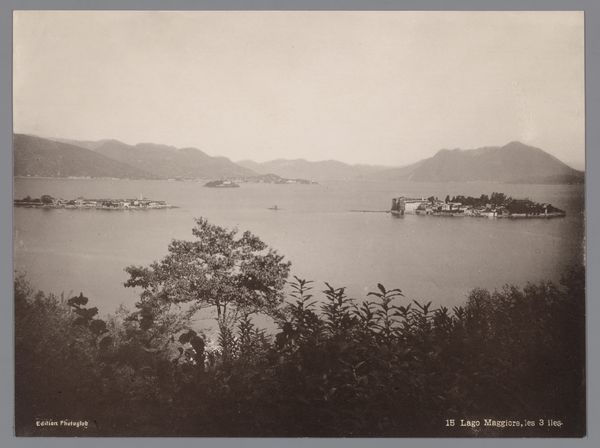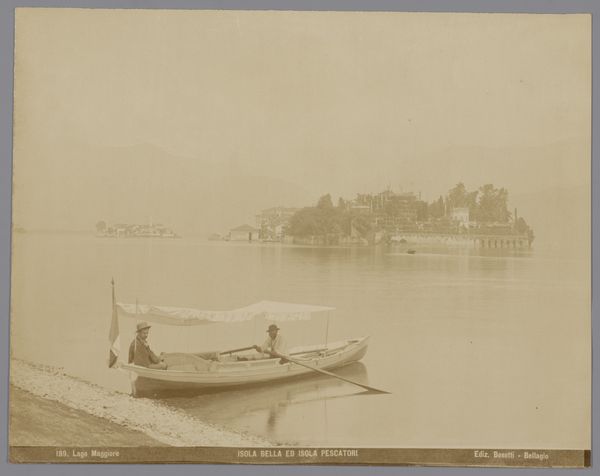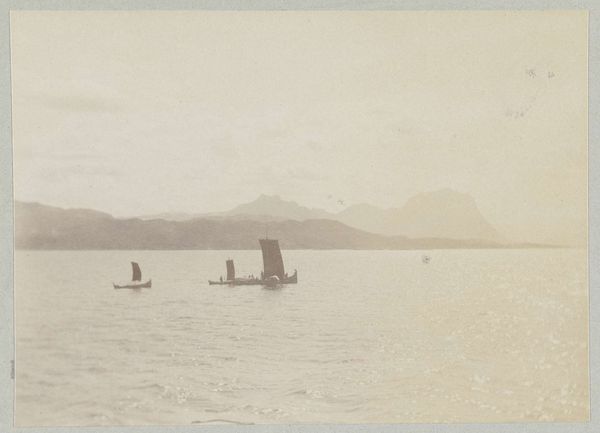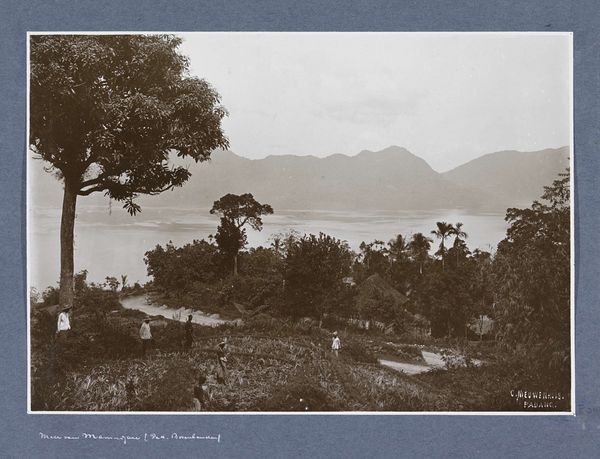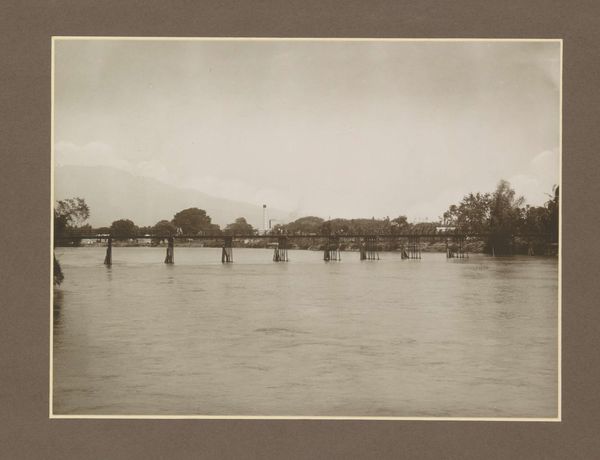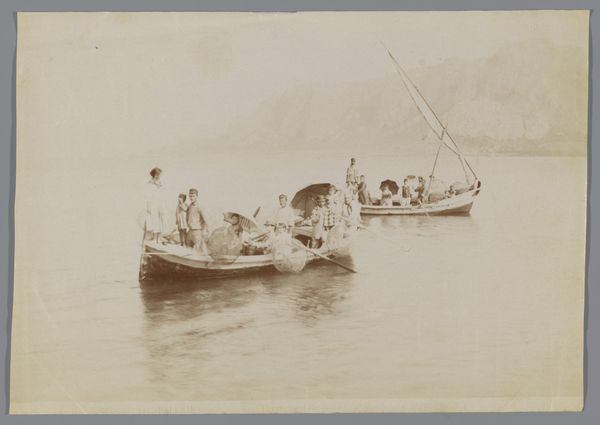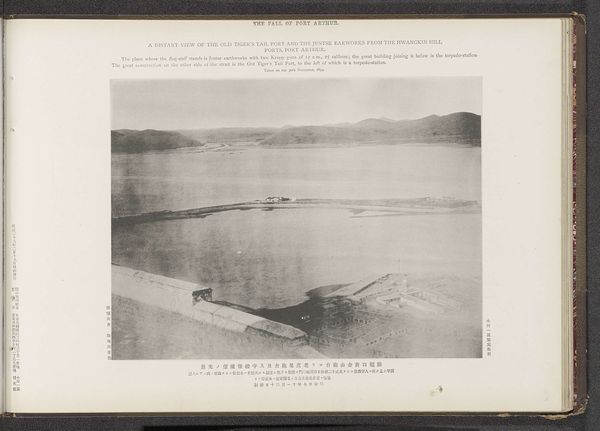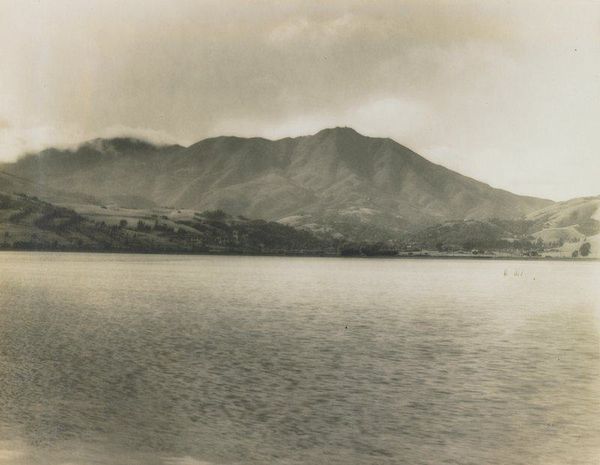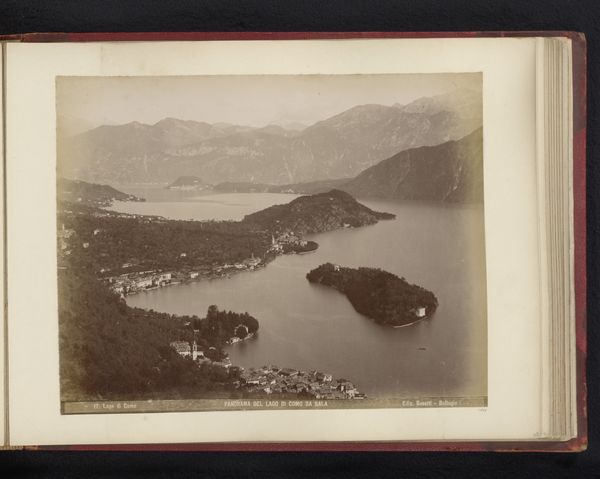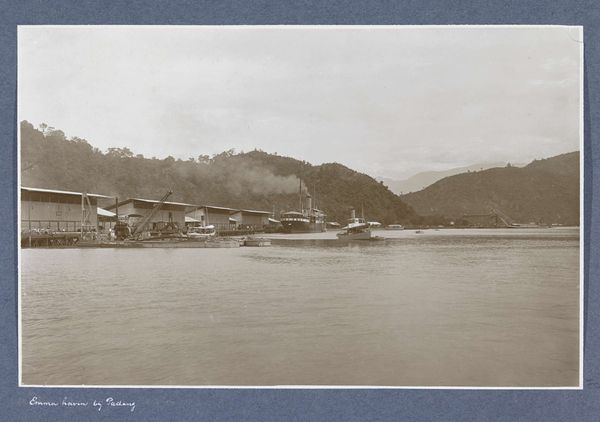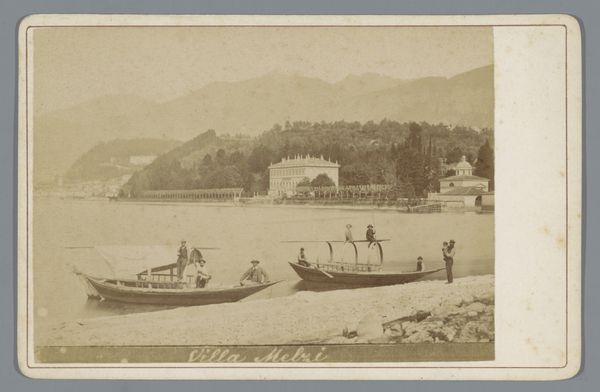
Gezicht op het Meer van Manindjau op Sumatra met vissers in kano's c. 1900 - 1920
0:00
0:00
photography, gelatin-silver-print
#
lake
#
pictorialism
#
landscape
#
photography
#
orientalism
#
gelatin-silver-print
Dimensions: height 206 mm, width 287 mm
Copyright: Rijks Museum: Open Domain
Curator: It is interesting how the gelatin-silver print from circa 1900 to 1920 captures an uncanny atmospheric effect. What is your initial take, on this work titled "Gezicht op het Meer van Manindjau op Sumatra met vissers in kano's"? Editor: It feels heavy, muted. There is very little tonal differentiation creating almost an overwhelming uniformity in the greyscale values. A very subdued scene. Curator: The pictorialist style lends itself well to that atmosphere. Notice how Nieuwenhuis uses composition to structure a clear spatial hierarchy, setting the mountains in the distance against the flat plane of the lake, occupied by the figures of the fishermen, presumably local people who work and live in and near Maninjau Lake, on Sumatra. Editor: How would this photographer, presumably Dutch given the label in that language, be trying to shape views of Indonesia, at the height of Dutch colonialism? Is he merely showing daily life, or exoticizing it? Curator: Precisely, this photography operates within a broader genre of Orientalism, common at the time. The composition romanticizes an Asian landscape to invoke certain sensibilities of peaceful simplicity and abundance, the vision is carefully constructed for a Western audience. Semiotically, the fishing boats signal traditional lifestyles outside the industrialized West, a common trope in colonial visual culture. Editor: Right, but does that romanticisation help the indigenous population or reinforce social hierarchies? Who is the audience here, and what assumptions about Indonesian life are baked in? It is hard to imagine these fisherman were in control of how they are being depicted. Curator: It's important to read photography not as mere reflection but as production of cultural meaning. Though seemingly objective, photographic technologies also advance socio-political aims through symbolic language. It highlights the visual rhetoric present in seemingly neutral representations. The light here plays a crucial role in constructing its meanings through diffusion rather than distinction. Editor: A fascinating, but fraught example of how aesthetics, technology and power are interlinked. Curator: It makes you ponder the politics behind photographic imagery, which certainly invites closer study.
Comments
No comments
Be the first to comment and join the conversation on the ultimate creative platform.
